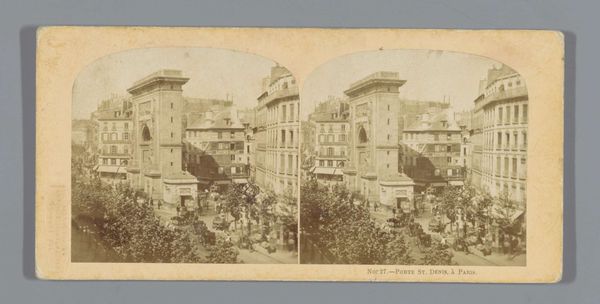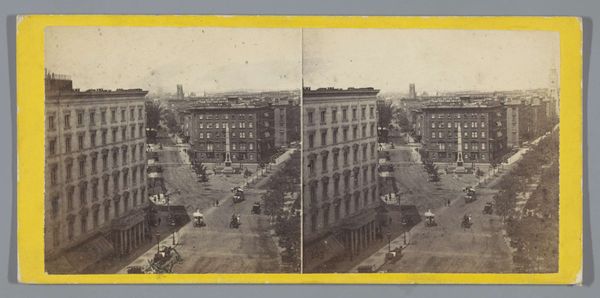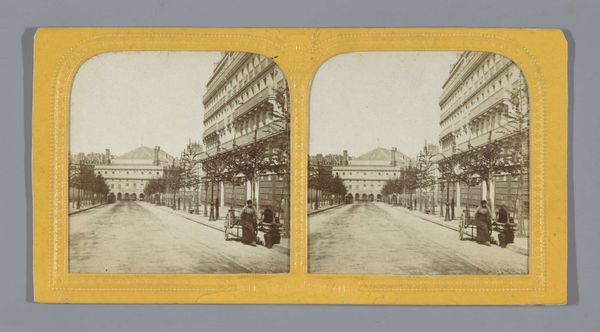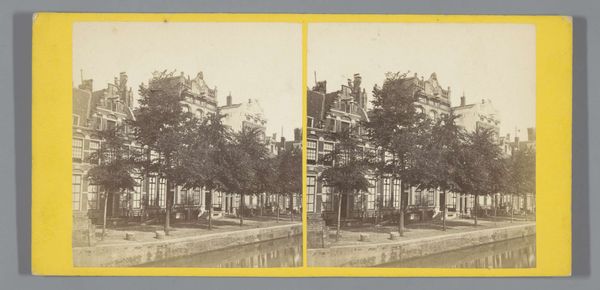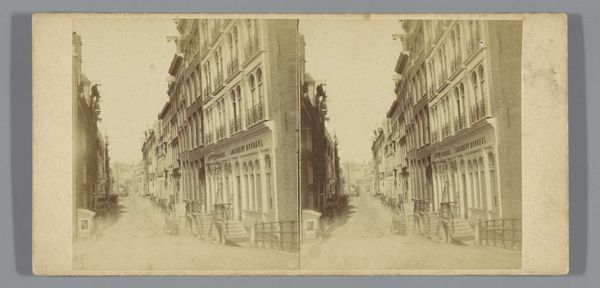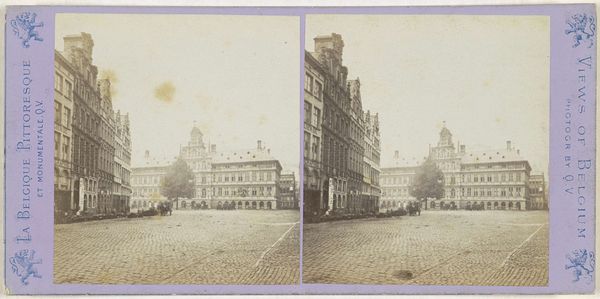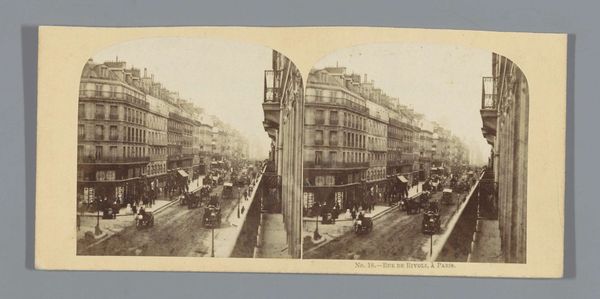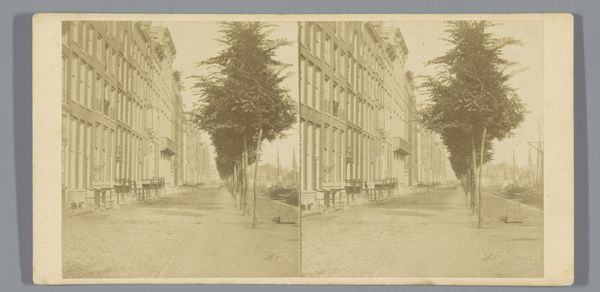
daguerreotype, photography
#
daguerreotype
#
photography
#
cityscape
#
street
Dimensions: height 85 mm, width 170 mm
Copyright: Rijks Museum: Open Domain
Curator: Here we have an early cityscape photograph, a daguerreotype from about 1855 to 1865 titled "Gezicht op de Rue Impériale te Lyon" showing a grand boulevard. What are your first thoughts? Editor: There's a beautiful stillness about it. Despite being a city scene, it feels incredibly calm, almost like a meticulously crafted miniature. The symmetry is striking, bisecting the image with the vanishing point far in the distance. Curator: It's remarkable how these early photographic processes captured details. "Rue Impériale" in Lyon wasn’t simply a street; it was a statement of imperial ambition under Napoleon III, aimed to modernize and project power, reflecting the Haussmann urban planning ethos seen also in Paris. This vista offered a view into how deeply capitalism penetrates the social fabric by reshaping the cities we inhabit, influencing spatial arrangements and interactions. Editor: The repetition of architectural facades strikes me as interesting. Given the labor involved in building those structures and in producing a single photograph, this view speaks volumes about emerging class structures of labour during industrial urbanization. I wonder about the provenance and manufacturing context, even about where the chemicals used were sourced? Curator: Precisely. And within these expanding cityscapes, you have a renegotiation of public and private spaces, a discourse about who has access to what areas and resources within the new, modern city. This intersects with how gender roles shift too, with the rising visibility and presence of women in these spaces reshaping societal norms. Editor: Indeed. Beyond the grand structures, the actual mechanics and techniques interest me too, understanding each phase, and the various chemical interactions during its development as its production context also greatly shapes this final rendering, influencing how space and materials manifest through different processing stages Curator: Exploring those points definitely complicates how we experience a picture of urban modernity; the lens on identity is so very vital to considering what is seen, and often what isn't. Thinking intersectionally, we question what it meant for those from various backgrounds to traverse this very “Impériale” street, engaging with or being excluded from the promises of modernity. Editor: I agree entirely. Reflecting on the image’s physicality, it offers insight on societal evolution through labor and innovation—connecting it with its own production method to consider and reveal nuanced dimensions within this captured space and moment. Curator: It leaves me thinking about the role of photography in shaping collective memory and historical consciousness. How do such carefully constructed urban visions reflect or distort the complex realities of the era? Editor: For me, examining these kinds of photos serves as an excellent tool, both illuminating specific temporal mechanics while broadening discussions of process, labor dynamics, and the nature of material representation across multiple contexts.
Comments
No comments
Be the first to comment and join the conversation on the ultimate creative platform.


